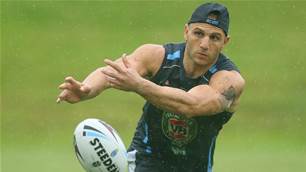Ryan Hipwood takes Inside Sport through the process of competing in one of the most dangerous sports in the world.

If a surfer conquers a monster wave and nobody films it, did the wave actually exist? Technically, in the realm of big-wave surfing, which sees disciples attacking – or being attacked by – waves up to 20 feet high, the answer would be an emphatic “no”. Such is the life of Ryan Hipwood, Australia’s big-wave extraordinaire who traces the planet with his small team of fellow big-wave riders and film crew looking for magical experiences and stunning footage.
“Hippo” hit the big-time in this thrill-seeking world when he was captured in action at Shipstern Bluff in Tasmania, a ride that won him a nomination for the Ride of the Year gong at the prestigious Billabong XXL Big Wave Awards in 2009. That beast almost claimed his life. You probably saw it on the news; it made headlines around the world.
His most recent claim to fame was the long, spitting wave he caught at the famous Cloudbreak in Fiji, which saw him go close to winning that same award two years later. Again, no cigar. Never mind though, the Gold Coast native knows he has time on his side. “There are a lot of guys who are at the top of their games and are in their early 40s ... I’m about to turn 28, which is quite young for a big-wave surfer. If I stay fit and healthy and still want it, then I’ll keep doing it. I think you know when your time’s up. If you feel that you don’t have that hunger to want to do it anymore, you’re probably doing it for the wrong reasons.” Hunger’s certainly no issue for Hipwood, who took Inside Sport through the process of competing in one of the most dangerous sports in the world.
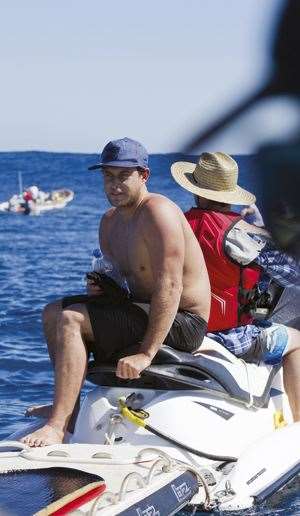 ON LOCATION
ON LOCATION
“All my big-wave surfing is documented by a small film crew of Chris Bryan and Tim Bonython. They enjoy shooting really big waves, dramatic situations. They shoot everything; a lot of the high-performance stuff in smaller waves as well. I think they get pretty excited when the wave’s big. My job is the surfing part and they like filming it.”
BIG-WAVE BUG
“This wasn’t something I’d always wanted to do. I was competing in junior series, just like all young aspiring professional surfers, but I kind’ve went more the free-surfing route; I was pushed that way by my sponsor at the time. For me, it just progressed from free-surfing perfect waves all over the world, before it got to a point where I was looking for that next step and the waves just seemed to be getting bigger every time I went away. I got comfortable after a few trips and really caught the bug for it. Now it’s pretty much what I get paid to do.”
WEATHER WITH YOU
“There’s a handful of surfers I do a lot of my travelling with, like Mark Mathews, who’s another top, big-wave free-surfer. We push each other as much as we can. We’ve gotten really good at reading maps. We know when certain places are going to be good and we like to keep an eye on them. The weather-reading systems and websites are so good these days; you can set up alerts that come straight to your Hotmail. We’ll usually make an absolute call two or three days out on whether it’s going to be worth going or not.
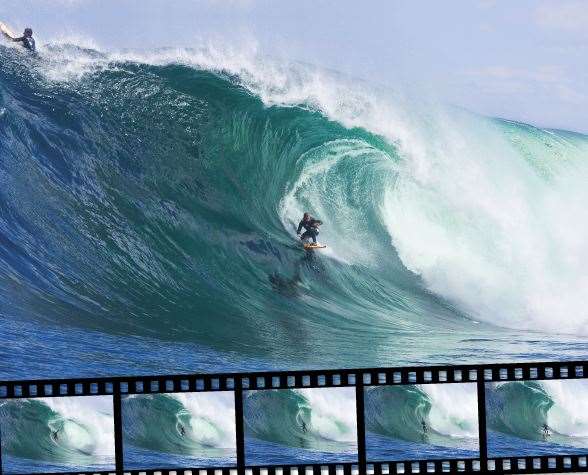
“You get excited in the lead-up to it. It’s definitely a journey from when you first see the system coming to when you commit to going. It’s always a bit of a gamble on a big-wave eventuating. Anything can happen. Although, with the websites and the forecasts, things have gotten pretty accurate. It’s rare for us to go somewhere after the forecast has been really good, only for nothing to eventuate.”
FIT AND WELL
“Once a week I’ll have a deep-water breathing training session. I try to keep my cardio up there as much as I can with two or three sessions of that a week, too. Obviously strength is vitally important, as it helps eliminate potential injury. I usually try to do two strength sessions at a gym ... and surfing in between all that.
“My breathing exercises are called Breath Enhancement Training – really important for big-wave surfers. I’ll do a lot of ‘negative’ holds, which is inhaling through the nose, exhaling slowly through the mouth. This is different from your average ‘positive’ hold, which might just be a deep, lung-filling breath. If I’m out of breath or wounded, I can cope with not having air in my lungs. It teaches me to stay calm in bad situations.
“In the gym I’ll do one strength training session and the other one will be a Crossfit-sort-of circuit. Then I’ll try and run once or twice a week. I’ll do a 10km run at a pretty fast pace, up and down hills on a circuit. The breath-enhancement stuff is in the pool and doubles as another form of cardio training as well.”
BEING PREPARED
“Preparation for a big-wave attempt starts months out. The guys on the ASP Tour, on the top-40 circuit of surfers who compete, have a schedule. They know exactly when and where they’re going, the organisers know what spots peak at the right times ... What big-wave surfers do is really difficult because we basically have to make sure we’re ready to go at any moment. We have a whole range of equipment, from really big paddle boards, to tow boards – you definitely have to be prepared and ready. You have to be fit all the time, too. If you’re not in that frame of mind, organised and ready and prepared, you really shouldn’t go.”
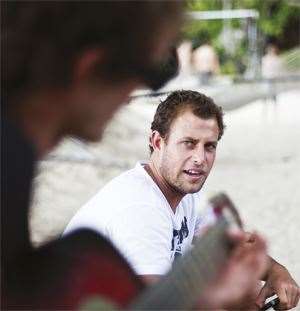
PICK A BOARD
“The equipment we use for surfing big waves involves such a wide variety of boards. It varies from having three or four different tow boards for different locations, huge paddle boards, nearly 11-feet long, down to your short boards. The location obviously dictates what boards you’ll take. If we were going to Fiji, for instance, we’d carry maybe six-to-eight boards, but most of them would range from six feet long to anywhere over eight feet long. If it was really big Fiji, my board would be around eight-foot long, over three inches thick, 20-and-a-half inches wide.”
APPROACHING THE BEAST
“I’ve actually tried to change my approach a lot. I used to get really over-excited; I’d be running on adrenaline even before I’d hit the water. I’d find a lot of the time that I’d get not even an hour, an hour and a half into the surf at the start of the day and I’d already be kind’ve exhausted. Now I try to do as much preparation as I can. I’ll have all the right flotation devices and stuff like that on hand. If I have that ready, my boards, wetsuits, good leg ropes, all those little things, and I’m in a good frame of mind, that plays a big part in how my day pans out.
“Usually if I’m in a bad frame of mind, it’s because I’m not organised or not ready. Just before the day I try to envisage what it’s going to be like and how and what I’m going to do. I’ll ask myself, ‘If something went wrong, what would I do there?’
“I might have 20-minute or half-hour breaks here and there, but if the waves are good, and it’s big, I’ll stay out on the water all day. That’s quite dangerous to do, but if you’re in good shape and you’re feeling good mentally, you should be able to surf all day.”
SCARY SHIT
“I’ve definitely had my fair share of really scary moments. One that stands out was a wave in Western Australia. It’s not a paddle wave, it’s like a really thick, short wave that you need to get towed in on by a jet ski. It’s one of the heaviest waves in the world. I came off there a couple of years ago and was really lucky to come up. I had
a flotation device on, but the wave is really powerful. It has a lot of energy and hits a shallow reef, then it drops off into really deep ocean water. It has a lot of deep-water currents which push you deeper if you get stuck in the wrong sort of draft. I got caught in a really bad down draft. It ended up pushing me that far down that my ear drums burst and then I got held down for almost a minute, which is a pretty long time to be underwater.
“When it first happened I didn’t know which way was up because I was being pushed so fast. My sense of direction was all over the place. In the end I was swimming up to the surface, but I wasn’t swimming straight, a bit sideways. I was close to blacking-out.”

GETTING DUMPED
“Something like that definitely rattles you. I found it really hard to get over that one. I’d had wipe-outs before that might’ve taken a trip or two to get over, but this one definitely played on my mind. I had nightmares about it. I couldn’t get it out of my head. It took me a good year to feel I was back on track. Getting out of it all in one piece came down to training hard and being prepared. If I wasn’t training, there would’ve been a good chance I’d have blacked-out. It was just a reality check and a reminder of why I train and try and do the little things right.”
PADDLE OR PULL?
“How you get out to these massive waves depends on the location a lot of the time. You do need to take a boat
out for a lot of spots – Fiji for example. Shipstern Bluff down in Tasmania – you take a boat out there. Most of the big locations you can take a boat out because a reef breaks in a channel. But other places you might be able to paddle out to, like Jaws Peahi in Maui. A lot of the outer reef spots in Hawaii you can paddle out to as well.
“I don’t think you can get much of a better wave than Cloudbreak in Fiji when it’s really big. It’s the most perfect outer reef; really warm water. Just the ultimate big-wave paddle surfing spot in the world.”
WHY?
“It’s a hard question to answer. I surf in really big waves and get to experience it with my friends. It gives me the self-satisfaction that I’ve achieved something that’s quite amazing. It’s really hard to get that sort of feeling from a lot of things people do. I’m sure you can get it from certain jobs ... For me, I get the biggest thrill from surfing big waves. It’s kind of what I’m after in life. It makes me feel good.”
− James Smith
Photos by: Rod Owen
Related Articles
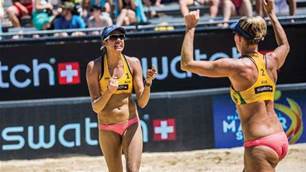
How Australia's beach volleyball women train

How Australia's beach volleyball women train
